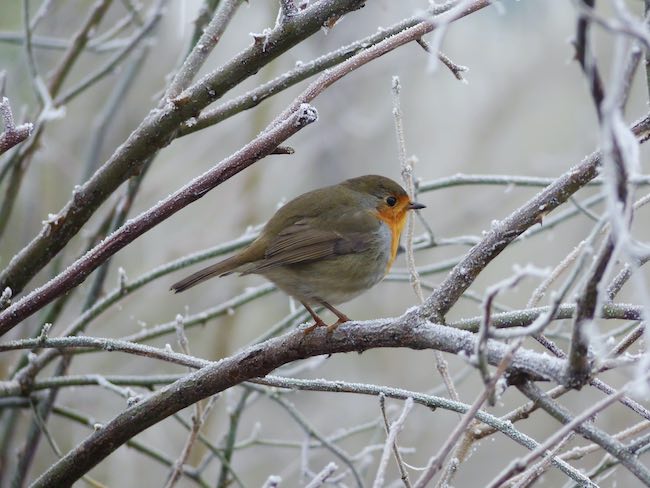Your basket is currently empty!

Wild bird food – Feeding Birds in the Garden
Feeding the birds in your garden with wild bird food can be a critical source of food for birds during the breeding season and the winter months. With the recent changes in climate producing unseasonable weather birds are always under pressure to find food.
Feeding Garden Birds
About two thirds of all households feed their garden birds at some stage each year.
When to feed: It is now accepted practice to feed birds throughout the year – not just during the winter. Indeed, birds may be most in need of food in spring, just at the point where we are most likely to stop because we think it is getting warmer. By April and May, nights are often still freezing, but birds must begin to defend territories, and spend much time singing or laying and incubating eggs, at the very time when there are no seeds and few insects available naturally. It is in late summer when your feeders will probably be most inactive.
There are some simple golden rules to ensure that your kindness is doing good rather than harm.
- You can be as inventive as you like with what you feed – but ALWAYS avoid salted food of any sort (chips, crisps, salted bacon, salted peanuts, plus desiccated coconut) as this can seriously dehydrate birds. And avoid feeding loose peanuts during the breeding season as this could possibly become lodges in the mouths of chicks.
- Keep your feeding stations hygienic.
- Provide water as well as food – it is essential for feather maintenance as well as drinking.
What are the best foods?
Different birds eat different foods, which is why putting out a variety of foodstuffs will attract a wider range of species. Typical foods include:
- Peanuts – good traditional food, best-loved by the tit family but also taken by starlings, sparrows and greenfinches
- Sunflower seeds – especially loved by greenfinches
- Mealworms/ waxworms – not for the squeamish, live food is increasingly popular, good in the breeding season for robins, wrens, thrushes and many more
- Nyjer/Niger Seeds – especially loved by goldfinches
- Fat cake – tits, blackcap
- Table seed (mixed corn/wheat/pinhead oats) – collared dove
Deterring unwelcome visitors
There are several visitors which are often unwelcome at feeders. All come because there is food on offer – some to eat the food you put out, some to try to catch the birds you want to attract.
- Rats – most problems occur either with spilt seed that isn’t cleared up regularly, or ground feeders left out overnight. Solutions include attaching seed trays to the base of hanging feeders to catch much of that which is dropped, and bringing ground feeders in overnight
- Squirrels – grey squirrels are highly adaptable, and finding a solution that they cannot crack can be hard. Good products are now available – either Perspex domes that fit over or under a feeder, or metal cages that fit around the feeder and let small birds in but keep squirrels out, and also larger birds such as feral pigeons, crows, magpies, wood pigeons
- Cats – if it is your cat, or you can persuade your neighbour, attaching a bell to the cat’s collar is a good alarm for the birds; alternatively, products are available which emit sounds designed to deter cats
Nestboxes
Bird nestboxes: Typical nestboxes – the ones with the small round hole – provide substitutes for the natural holes in old trees which are often absent from gardens. But there are many other types of boxes that can be used, each with a particular design to encourage a particular species. And it’s not only birds – bats, dormice, hedgehogs and even insects can be attracted to boxes too.
Most birds will require a nestbox that is higher than 2 metres up to make them feel safe from predators, but shouldn’t be much higher than 5 metres – much will depend on where you can reach, for the box will need to be accessible in order for it to be cleaned out.
There are some birds, however, such as wrens and robins, that nest low down but are well hidden in vegetation.
Where boxes are open to the elements, they should not face south or west which will put the young birds at risk of overheating in the sunshine and will also face the prevailing winds. Anywhere between the north and east is ideal. Lean the box slightly forward too, to lower the risk of rain dribbling or driving in.
Fixing nestboxes to trees.
If possible, avoid using nails, and affix instead with a loop of wire cushioned against the trunk with, eg, a hose pipe.
Clearing out nestboxes
It is best to clear out your nestbox each year, and the best time to do it is autumn. Sometimes you will find unhatched eggs or even the remains of youngsters. This is quite normal – birds try to produce as many young as possible, knowing that there will always be some losses due to weather or food shortages. Unhatched eggs can legally only be removed between October and January and must be thrown away. Disinfect only with boiling water.
Boxes for other creatures
There are now nestboxes that can be bought – or made – for hedgehogs, bats, lacewings and bees. The key is understanding the needs of animals and then being creative!














